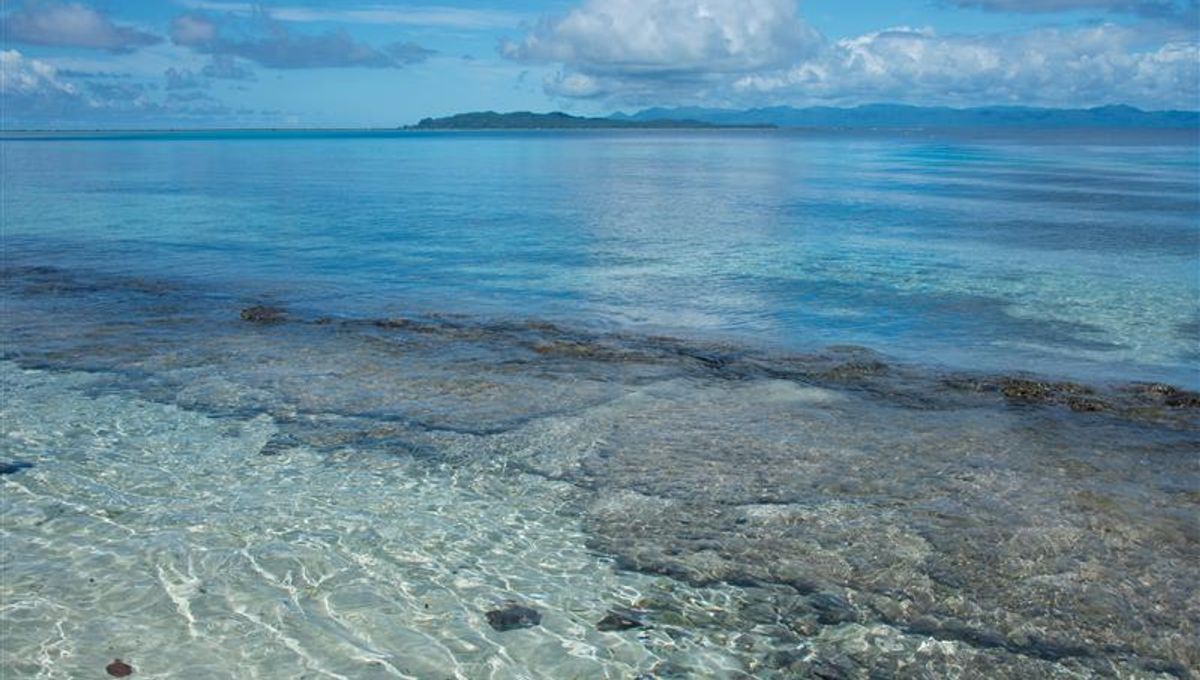
History is filled with stories about island and their civilizations that disappear after some cataclysm (I bet I can guess which one you’re thinking of). But I doubt many people have heard the story of Teonimanu, the landmass that has now vanished from among the Solomon Islands. We only now know of its existence because of the cultural memory of those living in the area today.
Storytelling and mythmaking are a fundamental aspect of human culture. Although many elements of such stories are fantastical and improbably, they have nevertheless been vehicles for many abstract “truths” that are passed down through the generations. But in addition to these types of “lessons”, myths can also be sources of historical information, especially about events that occurred in the distant past. And although some researchers have been aware of this for some time, the wider scientist community is increasingly taking note of how local myths can shine light on geological events that happened thousands of years ago.
The island of Teonimanu is a powerful example of this. If you go to Google Earth and search for 9°59’36″S 161°59’10″E, do you know what you’ll find? Nothing. Well, that’s not completely true. You’ll find a dark blue patch surrounded by the general blue of the Pacific Ocean. This darker patch, however, indicates a small landmass, now known as Lark Shoal, that is submerged below 1 to 14 meters (3.2 to 45 feet) of water.
However, if you could rewind Google Earth to show the same area several hundred years ago then you would have seen an island sitting where Lark Shoal is today. This is where Teonimanu used to be.
Before it disappeared below the waves, along with a few others in the area, the island was inhabited by hundreds of people. That is, according to Professor Patrick Nunn, a geologist and geomythologists at the University of the Sunshine Coast who learnt about the lost islands through oral traditions and histories passed down among the people of the central Solomon Islands.
From their accounts, Nunn suspects the islands probably disappeared sometime between the late 16th century and the late 18th century, essentially between the times when the Spanish explorer Álvaro de Mendaña (1568) and the English explorer James Cook arrived in the region.
When it sank, it was said to have sunk quickly. The stories tell of how only a few people managed to make it to their canoes and then reach the safety of the other islands. It seems the islands were struck by an enormous wave that covered the volcanic island in a way that would have looked like it was simply washed away.
Today, we know that Teonimanu was affected by a seafloor earthquake that made part of the undersea ridge that supported the island become unstable. This led to a giant landslide that dragged the ride under water and sent tsunamis to cover Teonimanu.
If it wasn’t for the oral traditions of the people who have lived in the area for generations then we probably would not know about this incident. As Nunn has written, “their stories might easily be mistaken for legends, for fictions, but like many such ancient stories there remain cores of truth – genuine observations – that over time have become encased in layers of narrative embellishment.”
Many of the stories concerning Teonimanu’s disappearance begin with a woman from the island who was called Sauwete’au. This local beauty was married to Roraimenu, a man who lived on nearby Ali’te island.
One day, Sauwete’au fell in love and eloped with another man, called Kaliita’alu, and both returned to Teonimanu. In his rage, Roraimenu obtained a wave curse that he used on the island as a way to enact his vengeance. He unleashed eight destructive waves on the hapless island and climbed to the highest point on Ali’ite where he watched with dark satisfaction.
Those who survived the curse were scattered to the various Solomon Islands, but many more lost their lives to this cruel act.
Of course, the narrative materials surrounding this story are all exaggerated and fanciful, its what makes them a great and engaging vehicle for transmission after all, but they hint at something very real and very destructive that nevertheless happened.
Lark Shoel is located within the Pacific Ring of Fire, a region that is known for tis frequent earthquakes and volcanic activity. Through an assessment of the seismic data, Nunn has identified debris from the original landslide, which, he believes, shows that the ridge is “inherently unstable”.
Across the Pacific, there are other stories of disappearing islands that met a similar fate to Teonimanu. These oral narratives offer us insights into a world that is otherwise lost to history. But stories like those from the Solomon Islands, as well as other places where generations of people have lived in volatile locations, may also have lessons for our current world. As global temperatures continue to rise and sea levels continue to rise, the knowledge of indigenous oral traditions is becoming more relevant to more people. But such knowledge may soon disappear as well.
As Nunn explained to the BBC, “I think everywhere in the world, as oral societies are becoming largely literate, knowledge that has been held orally is disappearing, yet it is this indigenous knowledge that is going to help [future generations] cope with sea level rise.”
Scientists now appreciate the value of indigenous knowledge for something more than just and anthropological curiosity, but let’s hope there is still time for us to learn from it.
Source Link: Teonimanu: What Happened To The Lost Island In The Pacific Ocean?